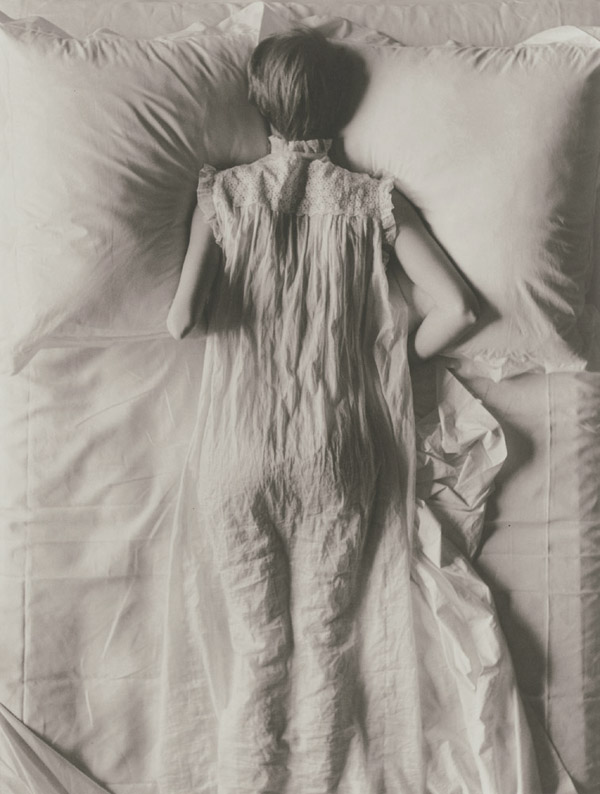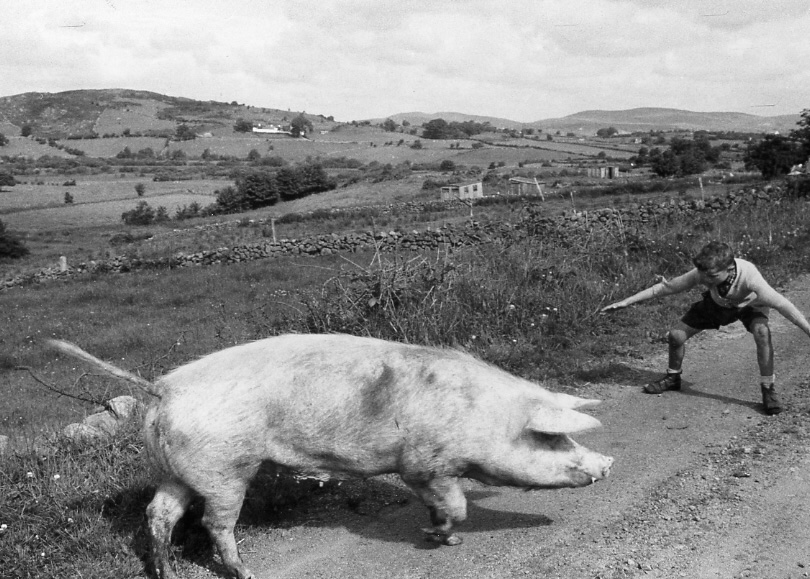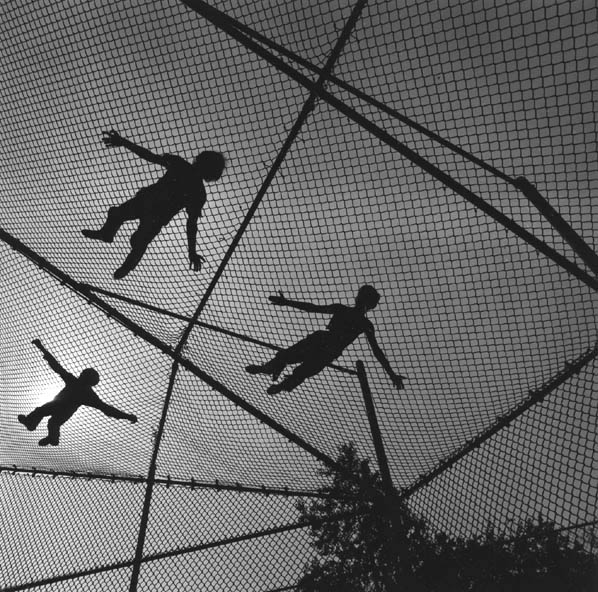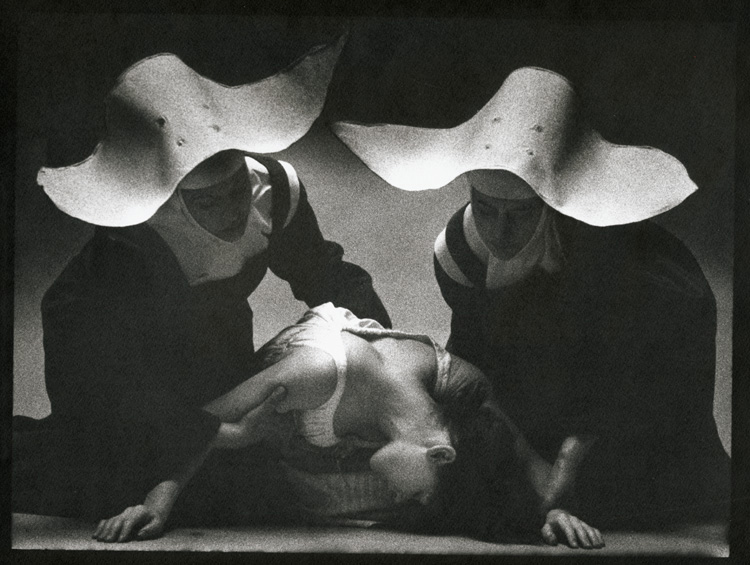What makes a photo iconic? One could argue that it's the perfect confluence of setting, subject, and photographer, but that doesn't really explain why so many--the vast majority--of seemingly perfect photographs don't attain the status of landmark, visual totem or otherwise definitive image. Memorable photos of the famous, or of great events, aren't necessarily iconic, though some of them certainly are, and perhaps that's because the difference between good and great often hinges on a hidden intangible that only time and distance can disclose.
This could be why, of the many masterworks in this exhibit, Edward Steichen's 1927 portrait of Marion Morehouse in a shimmering Cheruit gown has the aura of the ultimate fashion image. Looking back on the photo's history--as a Vogue magazine cover, and given that Morehouse was the wife of an indispensable American poet, E.E. Cummings--it seems to us now like a moment of between-the-wars optimism and effortless elegance that passed all too quickly, defining American style as something free, finally, of European shadowing, before things became increasingly more mannered.
Certainly, Morehouse's shy smile and regally at-ease pose set this image apart in a way that Steichen and his peers must have appreciated from their roaring-twenties perspective. Now, it carries the authority not only of age but also of a beauty that can rightly be called timeless, unaffected, and utterly modern--an authority earned, in other words, by time's failure to diminish it.
At the other end of the spectrum lies Robert Capa's 1937 photo of a soldier taking a bullet in the Spanish Civil War. The harsh reality of armed conflict is what animates this image of death, and its inescapably iconic status is a measure of its profound matter-of-factness and formal perfection: the soldier is flung by his fate in a tragic ballet of lost balance, his rifle paralleling his body as if measuring him for the coffin, while the hilly scrub on which he is falling and the expanse of gray sky that fills most of the frame stand in for Mother Earth and nothing less than infinity. It is a photo that has grown only more powerful in the years since it was taken, as war has grown more technological, more mass-annihilating, yet never more deadly personal.
In between these world's-apart icons, of course, are photos that endure and arrest by virtue of having directed our vision in new ways that still resonate. Berenice Abbott's 1937 shot of a New York snuff shop delivers all the vitality of immigrant America in a simple act of wondrous recognition, as the strange contents of the store window suggest familiar yet unfamiliar humanity. And Ilse Bing's powerfully kinetic image of a circus horse leaping through fire--a dark ritual of smoke, flame, and sheer equine force--attests to what photography can make of a fleeting moment.
What makes Robert Doisneau's picturesque tableau of a female accordionist in a Paris café iconic or Henri Cartier-Bresson's image of a picnicking family by the side of the river Marne is more intuitively grasped, perhaps--the classic Europeanism of the situations is, in both cases, made palpable by the photographers' sure handling of the mise-en-scene. These images convey their moments and atmospheres with such command and comprehension that we feel ourselves to be almost part of the ensembles depicted.
Then there are the still lifes and images of architecture--Steichen's Empire State Building, Francois Kollar's Eiffel Tower, both images rendered in double exposures that make surreal iconography from architectural icons––as well as Lartigue's magnificent 1930 portrait of disembodied hands, vase, and fruit that straddles the line between Pictorialism and Modernism. And Barbara Morgan's classic image of modern dance mistress Martha Graham in a sweeping body arc, or Irving Penn's study of a girl face down in bed, or Brett Weston's utterly emblematic view of sand dunes--iconic all, for no other reason than that they speak to us across the decades with total immediacy.
Exhibited and Sold By
Contemporary Works / Vintage Works, Ltd.
258 Inverness Circle
Chalfont, Pennsylvania 18914 USA
Contact Alex Novak and Marthe Smith
Email info@vintageworks.net
Phone +1-215-518-6962
Call for an Appointment












Share This